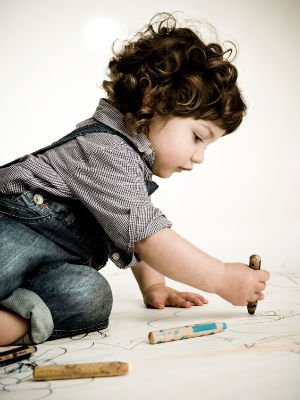Understanding how autistic children learn is key to teaching them with the same intensity as you teach other children. This may seem like a straightforward idea, but autistic children learn so differently that understanding autism itself is a must when you teach autistic children. By becoming educated in the disorder, teachers can effectively learn to deal with autistic children and adults both in and out of the classroom, creating a more understanding world for everyone
Autistic children are often visual thinkers. Thus teaching by speaking will not be entirely effective. Teachers should combine pictures with words for the autistic child to fully comprehend the lesson. For instance, if you are teaching about the animals of the world, you should have a flash card with the word “mouse,” say the word aloud slowly and clearly, and show the child a picture of a mouse. Perhaps even bring a live mouse in for show and tell. Nouns may be easier to teach autistic children since verbs require action and can be more difficult in illustrating. If you are teaching autistic children words such as “sit” or “stand,” you should complete these actions when you teach the word. Also, because of the tendency to be visual, autistic children are often unable to follow long sentences. They cannot decipher the sequence and become confused. Thus, writing instructions can be very helpful when proctoring tests or quizzes.

As visual thinkers, autistic children can often fixate on a particular object or picture. If this is the case, try incorporating that object or picture into lesson plans. If the child likes planes, try using planes for visuals wherever you can in the lesson. For example, when teaching math, create word problems about planes to interest the child. Autistic children also tend to be artistic or musical, producing highly original drawings and showing above average abilities with instruments or voice. Set aside time in the day for the arts and encourage activities that the children enjoy.
Autistic children may also have trouble writing because of the control over their hands and movement. This is frustrating for both the child and the teacher. To reduce frustration, allow the child to use a computer. If you can do this, make sure that the keyboard and monitor are close together as the child may have difficulty remembering what he or she has typed recently.
By being open to teaching an autistic child to the best of your ability, you are not only giving him or her the best opportunities in life, but you are also being a good role model to the other children in the class. Do not allow an autistic child to ruin the learning experience for others, but rather incorporate his or her oddities into your lessons as much as possible. Creating a more prejudice-free classroom is the best gift you can give this child.
#Autism #Art
Art House for Kids at Lakeshore/Clarkson, #Mississauga, Call 905 819 8142






